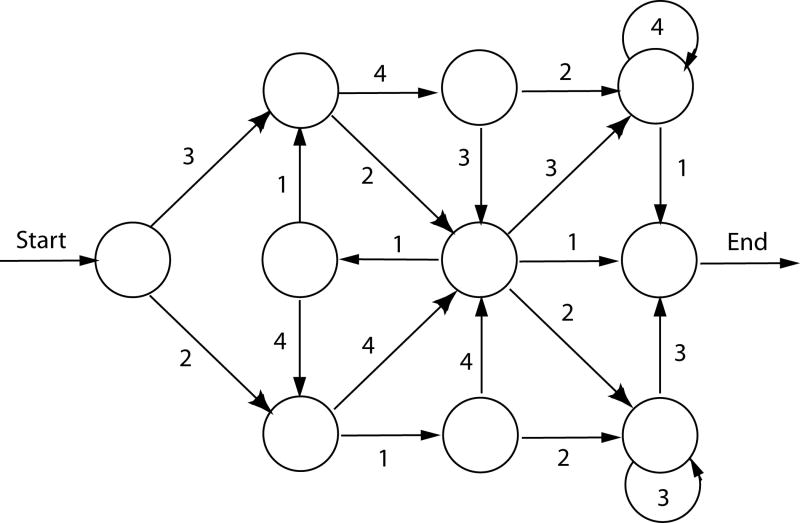Figure 1.
An example of an artificial grammar used to generate sequences in implicit learning experiments. To generate a sequence, the experimenter follows the paths of the grammar and notes the sequence of numbers that are encountered. For instance, the sequence 3-4-2-4-1 is grammatical with respect to this grammar, whereas the sequence 4-1-3-2-2 is not. The numbers 1-4 are then mapped onto stimulus elements needed for the experiment in question, allowing for the generation of a set of structured patterns occurring in virtually any stimulus modality or dimension as needed (e.g., tones, nonsense syllables, visual patterns, etc.).

